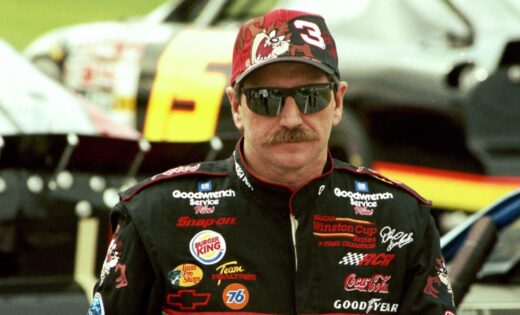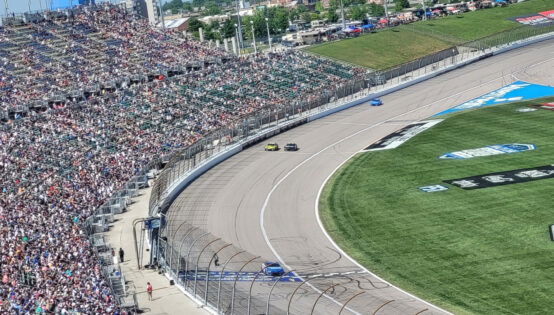Entering the 1996 season, Dale Earnhardt was already legendary. His “Ironhead” nickname reflected not just stubbornness, but raw grit. This prowess defined a generation of NASCAR. Fresh from seven Winston Cup championships, Earnhardt’s driving was as relentless as ever. Earlier that year, he’d taken wins at Rockingham and Atlanta. He had carved out a spot as one of the toughest competitors on the tour. His hallmark wasn’t just success, but the relentless work ethic and pain tolerance that kept him atop racing’s most dangerous events. Yet, by midsummer, his season would be put to the ultimate test. After the infamous crash at Talladega, few believed he could return so soon, let alone rewrite history at Watkins Glen.
Talladega, July 28, 1996: Earnhardt’s car went airborne during the DieHard 500 after contact with Ernie Irvan and Derrike Cope. The crash was vicious. A series of flips, collisions, and sparks that left rescue teams sprinting across the track. Earnhardt himself recounted, “When the car turned abruptly sideways, I knew I was going to hit the wall… That’s when I broke my sternum. When the car got on the side in the air… that’s when I broke my collarbone and bruised my pelvis.” Despite being briefly knocked out, he waved to fans after emerging. His grit refused to abandon his car until he was helped out by NASCAR officials. Medical reports confirmed he suffered a broken collarbone, sternum, and bruised pelvis. Injuries that would sideline most athletes for weeks, especially with Watkins Glen just two weeks away.
Dale Earnhardt’s fight through the pain for a pole
Against all odds, Earnhardt suited up for Watkins Glen just two weeks later. The pole run itself became the stuff of legend. Driving the No.3 Goodwrench Chevy with his torso braced, Earnhardt went on to shatter the existing track record, shocking everyone. Broadcast coverage marveled at the feat: “73.054 seconds folks, 120.733 mph, not only did he sit on the pole but a new track record with a broken clavicle and a broken sternum. Unbelievable.” Earnhardt, being himself, joked about the pain, foreshadowing race day. “I might try to stay in it, depends on how I feel. I’m a little sore on my shoulder this morning, but we’ll see how it goes.” T-shirts with his face and the slogan “It Hurt So Good” sold out at the track, immortalizing the moment.
After breaking his sternum and clavicle just 2 weeks prior in a horrific crash at Talladega, the GOAT, Dale Earnhardt gets the pole and set a new track record @WGI in 1996. Dale would go on to lead 54 of the 90 laps and finish 6th. This was an amazing feat and just another… pic.twitter.com/Bob7DPkNtg
— Classic Racing Battles (@RacingBattle) August 7, 2025
The following race day proved Earnhardt’s resilience. Despite qualifying pole, the physical toll was obvious. Shoulder and chest pain, fatigue after every lap. He led 54 of the 90 laps before falling back as pain mounted. Ultimately, he finished sixth, refusing relief help throughout the event. One commentator said, “Dale could have settled for just getting his car into the top 25. Or chosen an afternoon of leisurely fishing. He wanted and got the pole. How difficult is getting out of the car on Sunday going to be? Well, I don’t know.” His run amplified his “Ironhead” image. Even in pain, he refused to yield. A spectacle that brought the entire garage area and fanbase to their feet. Rival Geoff Bodine won the race, but Earnhardt’s feat stole the show.
Earnhardt’s track record at Watkins Glen remained a high watermark for years and became a symbol of NASCAR toughness. Later, it was broken as the sport advanced and cars improved. But the context remained unparalleled. The rest of 1996 only confirmed his mettle. He finished 4th in the points standings with 2 wins, 13 top-fives, and 17 top-tens, averaging 10.6th place despite injuries. The season embodied the “Ironhead” spirit. Always fighting, always driving. As NASCAR evolved, Earnhardt’s story at the Glen became legend, sealing his place among sports’ toughest icons.
Watkins Glen shifts gear with new restart zone ahead of NASCAR Cup race
Stories like Dale Earnhardt’s legendary toughness at Watkins Glen are woven into the fabric of this iconic track’s rich history. As the NASCAR Cup Series gears up for another thrilling weekend at the Glen, the venue itself is ready for a significant change. Watkins plans to introduce a new restart zone that promises to alter the dynamics of late-race battles. This update has sparked considerable discussion. Fans and drivers alike wonder how this adjustment will impact the racing action.
The restart zone has moved to the entrance of Turn 7, just before the Esses. In the past, restarts happened near the start/finish line at Turn 1. That spot often led to chaotic, tight racing. Now, drivers will accelerate earlier. They have more space and time to plan moves before they reach Turn 1. Speaking on this, NASCAR VP Elton Sawyer said, “Something that we’ve worked closely with the drivers and the race teams on over the last several years, especially on the road courses, where do we want the restart zones. This year, we’ve elected to move it just as you enter turn 7. So, once they exit that restart zone, then it’s racing on.”
This change aims to reduce crashes during restarts. The racing point is after the restart zone ends at Turn 7. From there, drivers can race without penalties until the finish line. The longer run may help spread out the cars and create more strategy.
Some fans worry that the fiery battles at Turn 1 will be missed. Others hope for cleaner, smarter racing. Drivers have shared mixed feelings, too. This new restart zone will write a fresh chapter in Watkins Glen’s history of intense and exciting racing.
The post NASCAR Historics: When Dale “Ironhead” Earnhardt Won Watkins Glen with Broken Bones appeared first on EssentiallySports.



